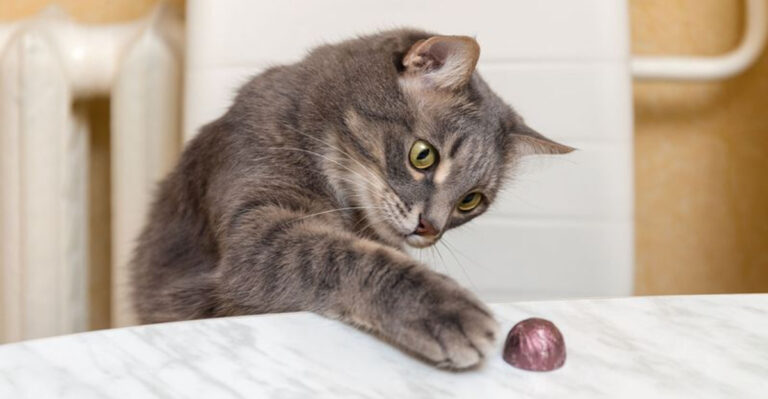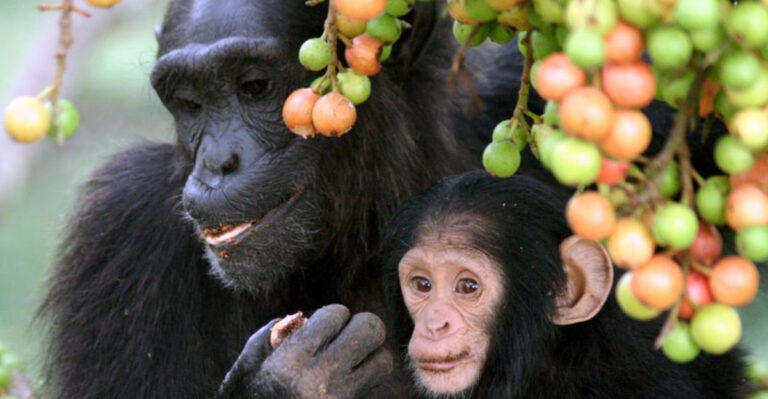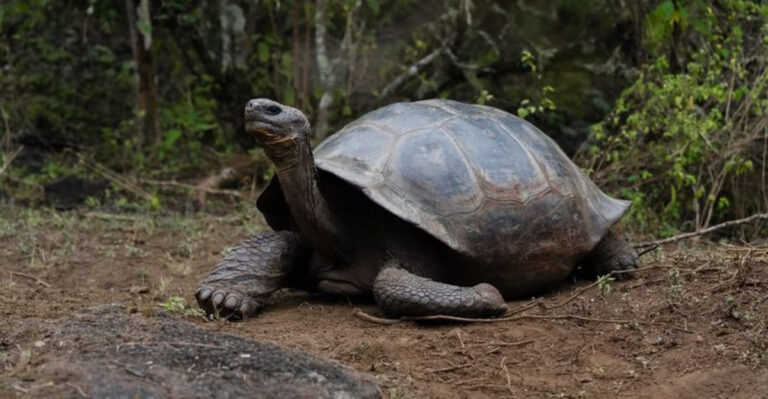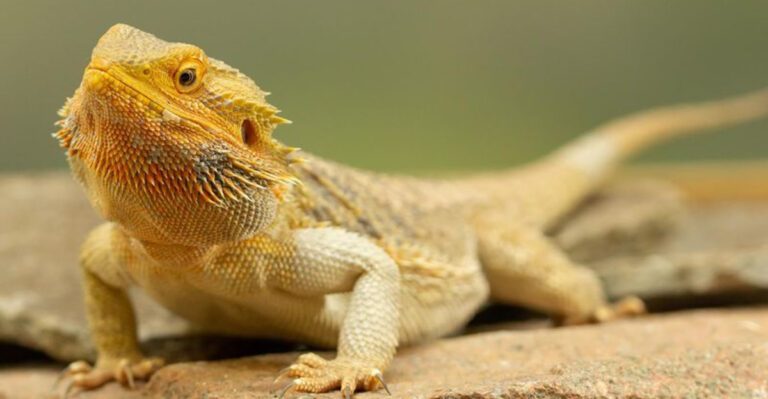13 Mistakes That Are Driving Hummingbirds Away From Your Yard
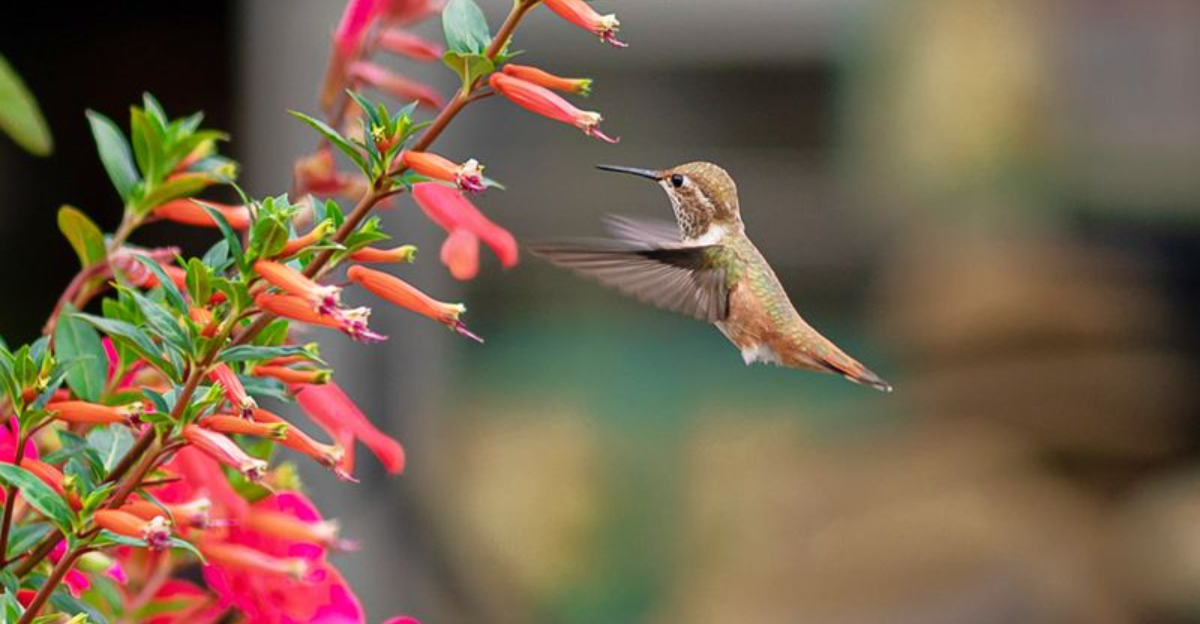
Hummingbirds are mesmerizing creatures that bring vibrancy and life to any garden. However, certain common mistakes can inadvertently turn your yard into an unwelcoming environment for these dazzling birds.
By understanding these pitfalls, you can create a haven where hummingbirds thrive and bring joy to your outdoor spaces. Explore the mistakes that could be keeping these aerial acrobats away from your flowers and feeders.
1. Using Pesticides
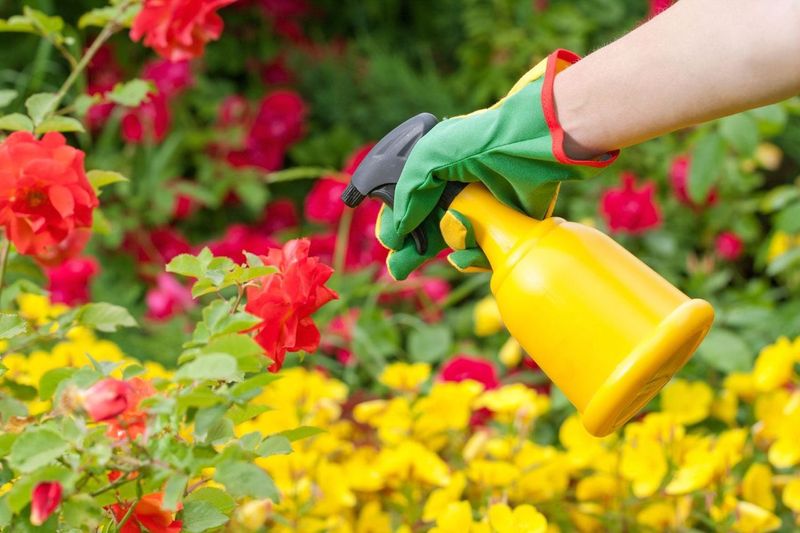
Pesticides can be the silent killers of your garden’s ecosystem. While they might rid your plants of pests, they can also harm the very creatures you’re trying to attract. Hummingbirds are particularly sensitive to chemicals, and even small amounts of pesticides can have a detrimental impact.
When insects treated with pesticides are ingested, it can lead to illness or even death for these tiny birds. Consider more natural pest control methods, such as introducing beneficial insects or using organic sprays. By eliminating or greatly reducing pesticide use, your garden will become a safer place for hummingbirds, ensuring their return and continued visits.
Provide a habitat with diverse plant life, offering both food and shelter without the need for harmful chemicals. A chemical-free garden not only benefits hummingbirds but also enhances the overall health of your outdoor space. Make it a sanctuary, not a danger zone.
2. Incorrect Feeder Placement
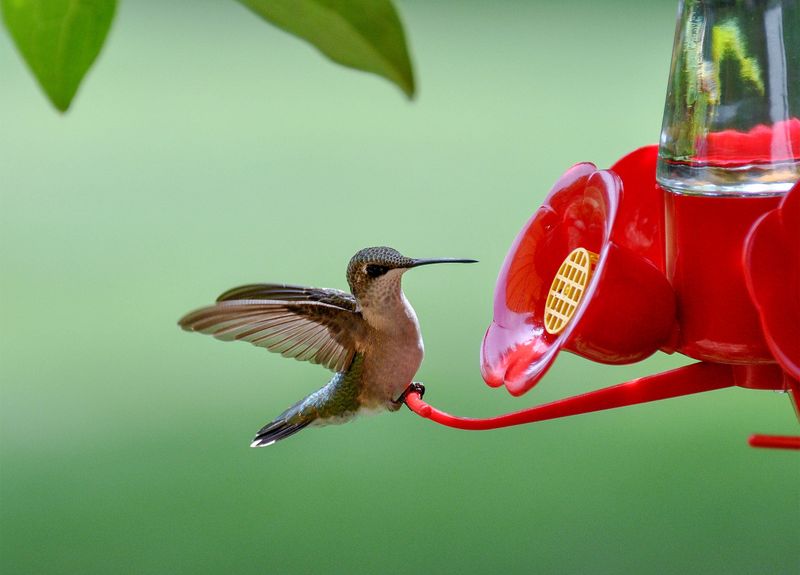
Finding the right spot for your hummingbird feeder is crucial. If placed incorrectly, it might discourage visits. Feeders positioned in direct sunlight can cause the nectar to spoil rapidly, turning it into a health hazard rather than a treat.
Additionally, placing feeders too close to windows can increase the risk of collisions, harming the birds you’re trying to help. Instead, hang your feeders in a shaded area, near protective cover like trees or shrubs. This not only keeps the nectar fresh longer but also provides a quick escape route from predators.
With careful placement, your yard becomes a welcoming haven. Remember, visibility matters—place feeders where they’re easily seen by passing hummingbirds. By being mindful of these details, you’re ensuring a safer and more inviting environment, enhancing your chances of enjoying these delightful visitors regularly.
3. Neglecting To Clean Feeders
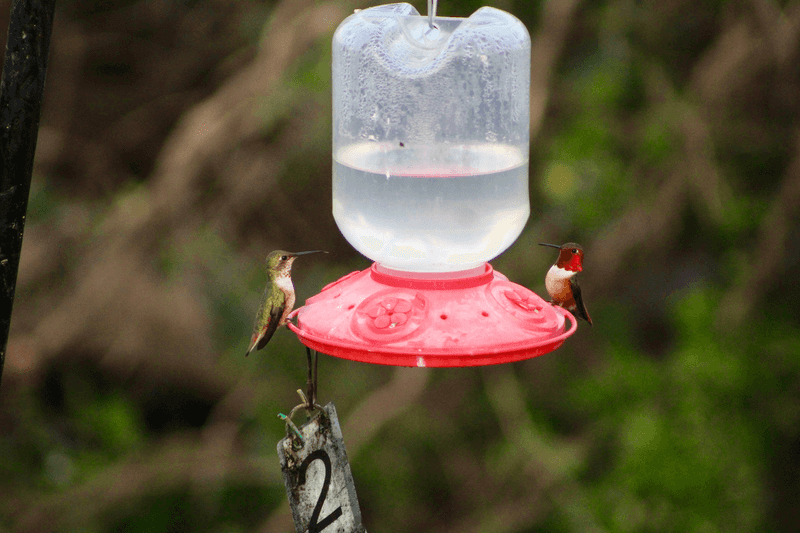
Cleanliness is next to godliness, especially when it comes to hummingbird feeders. Neglecting regular cleaning can lead to mold and bacteria growth, turning a feeder from a delightful dining spot into a deadly trap. Dirty feeders can cause fungal infections in hummingbirds, which can be fatal.
To prevent this, clean your feeders at least once a week with hot water and a mild detergent. Avoid using harsh chemicals that might leave residues. Rinse thoroughly to ensure no soap is left behind, which can deter the birds or harm them.
Regular maintenance not only protects the birds but also ensures they continue to visit your yard. A sparkling clean feeder signals a safe feeding place, inviting hummingbirds to return time and again. Make cleaning a routine part of your gardening schedule to keep your winged friends happy and healthy.
4. Offering Improper Food
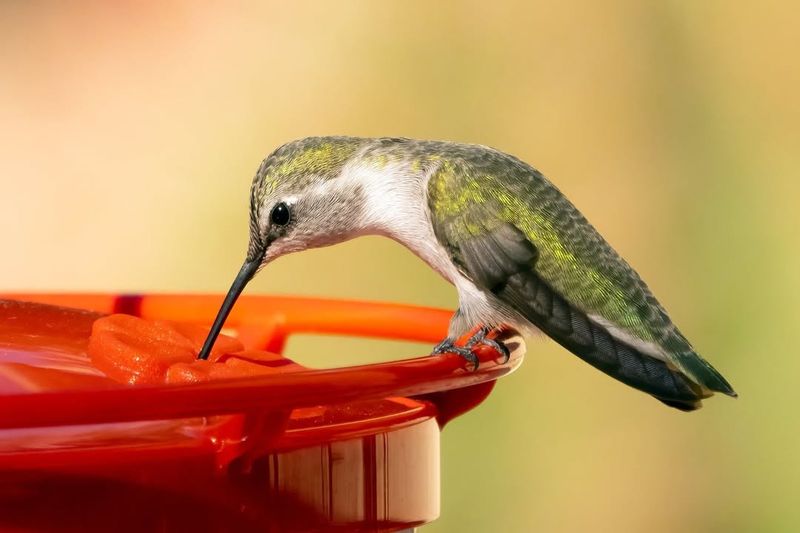
Feeding hummingbirds requires precision and care in choosing the right ingredients. Many make the mistake of using honey, artificial sweeteners, or red dye in their nectar solutions. These substances can be harmful, causing health issues for hummingbirds.
The ideal nectar recipe is simple: four parts water to one part white granulated sugar. Boil the mixture, let it cool, and fill your feeders. Avoid additives like food colorings, which are unnecessary and potentially harmful. By sticking to this straightforward formula, you support the birds’ dietary needs without risking their health.
Keep an eye on the nectar’s freshness, replacing it every few days to prevent fermentation. By providing pure, fresh nectar, you’re ensuring a steady flow of hummingbird traffic to your garden, allowing you to enjoy their beauty and grace up close.
5. Lack Of Water Sources
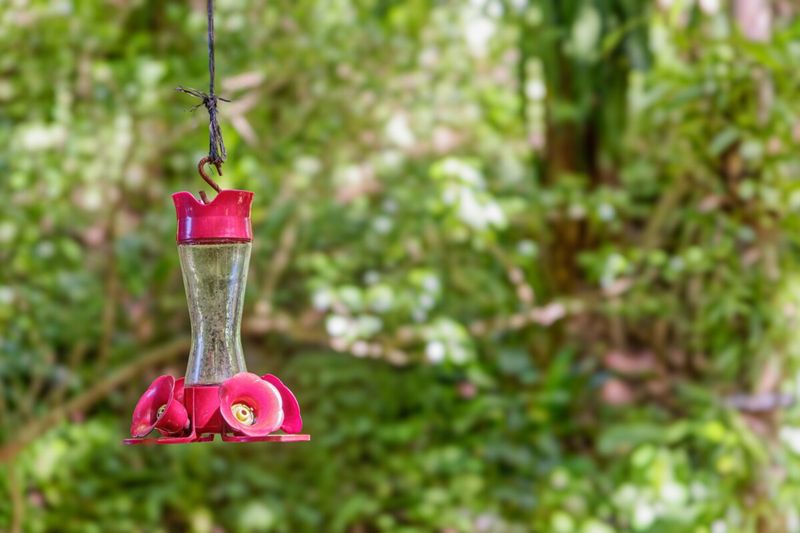
Water is as essential to hummingbirds as nectar. Many gardeners overlook providing a water source, unaware of its importance. Hummingbirds need water not only for drinking but also for bathing, which helps them maintain their feathers. A shallow bird bath or a dripping fountain can be perfect for these tiny birds.
Place water features in a quiet part of your garden, away from high traffic areas, to provide a peaceful environment. Ensure the water is clean and refreshed regularly to prevent stagnation, which can attract unwanted pests.
By offering a reliable water source, you enhance your garden’s appeal, encouraging hummingbirds to linger longer. Incorporate water into your garden design not just for functionality, but to add a soothing, aesthetic element. The gentle sound of water can be as inviting to hummingbirds as it is to humans.
6. Ignoring Native Plants
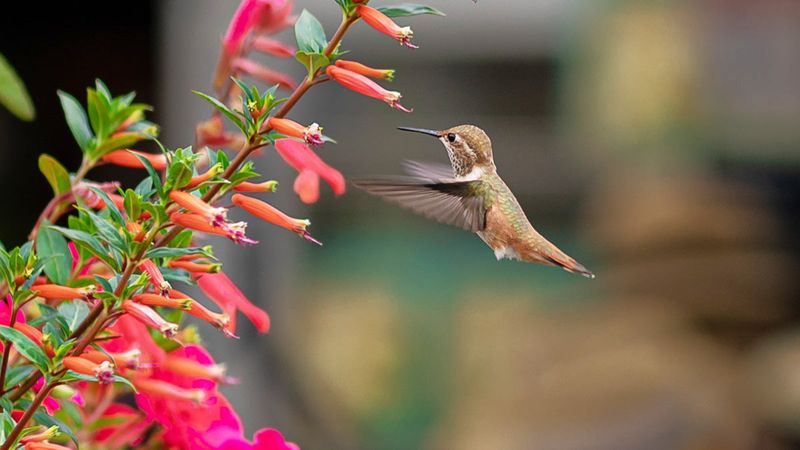
The allure of exotic plants can be strong, but for hummingbirds, native plants often hold the key to attraction. Native flora provides the ideal food source and habitat for local hummingbird populations. These plants have co-evolved with local wildlife, offering the right nutrients and bloom cycles.
Avoid the temptation of filling your garden with non-native species that may not meet the nutritional needs of hummingbirds. Instead, research and plant local flowers that produce high nectar yields, like trumpet vines, bee balms, and columbines.
These plants will not only attract hummingbirds but also support other pollinators, fostering a thriving ecosystem. By choosing native plants, you create a more sustainable and inviting environment for hummingbirds, ensuring they make your yard a regular stopover. Your garden becomes a vibrant tapestry of life, harmonizing with nature.
7. Having Few Flowering Plants
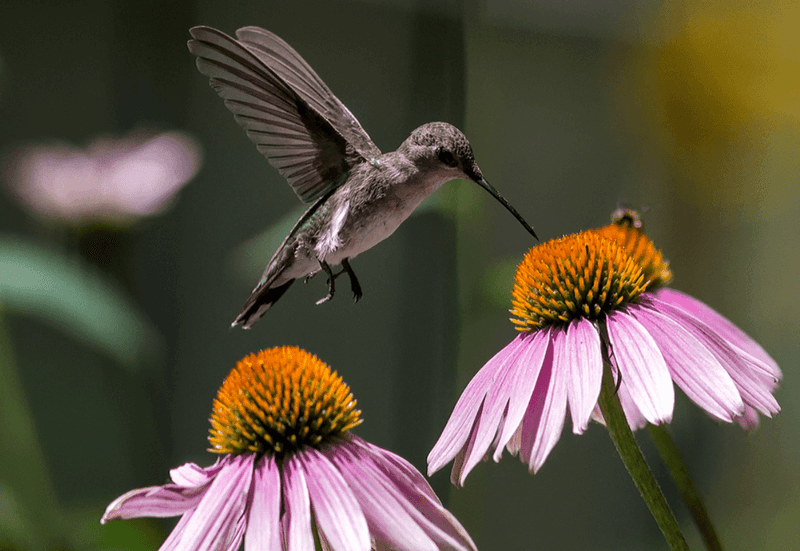
A sparse garden lacking in flowers can be unappealing to hummingbirds. These tiny birds rely heavily on nectar-rich flowers for sustenance. Without a variety of blooms, your garden might be missing the vibrant allure that attracts them.
Aim to plant a diverse range of flowering plants, ensuring a continuous bloom throughout the growing season. This provides a consistent food source for hummingbirds, encouraging them to visit regularly. Incorporate tubular flowers, which are particularly attractive to hummingbirds due to their shape and nectar production.
By creating a flower-rich environment, you enhance your garden’s visual appeal and ecological value. The more variety and abundance of flowers you have, the more inviting your garden will be. With careful planning, your garden can become a hummingbird paradise, alive with color and movement, offering endless joy for you and your flying guests.
8. Providing Insufficient Shelter
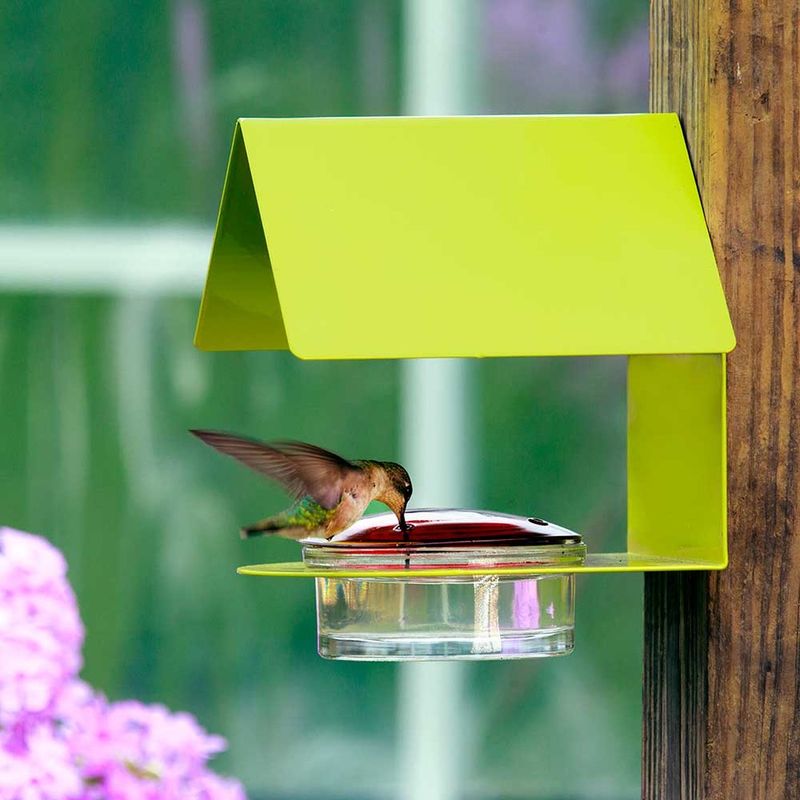
Shelter is crucial for hummingbirds, offering protection from predators and harsh weather. Gardens lacking dense foliage or shrubbery can deter these birds from settling in. Consider integrating trees, shrubs, and vines into your garden design to provide ample cover.
Hummingbirds seek out areas where they can perch safely, away from the prying eyes of predators. These natural shelters offer rest spots where hummingbirds can conserve energy and escape adverse conditions. Dense plantings not only provide safety but also serve as nesting sites.
By ensuring your garden has adequate shelter, you create a welcoming environment for hummingbirds. This not only benefits the birds but also enriches your garden’s biodiversity. Your outdoor space transforms into a sanctuary, supporting wildlife and offering a peaceful retreat. Encourage hummingbirds to stay longer by offering them the protection they need.
9. Failing To Control Predators
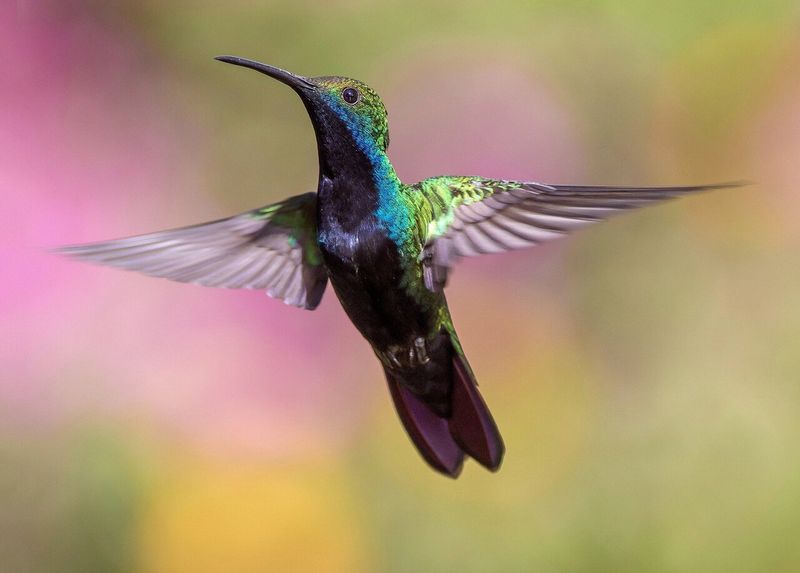
Predators can pose a significant threat to hummingbirds, and a garden without safeguards can become perilous. Cats, larger birds, and even some insects can be dangerous to these tiny creatures. To protect hummingbirds, monitor your garden for potential threats and take action when necessary.
Consider using deterrents to keep predators at bay, such as motion-activated sprinklers or placing feeders in areas less accessible to cats. Creating a garden that feels safe involves reducing hiding spots for predators while enhancing visibility for the birds.
By addressing predator concerns, you’re not only safeguarding hummingbirds but also promoting a more harmonious garden environment. This proactive approach allows you to enjoy the presence of hummingbirds without the worry of lurking dangers. Your garden becomes a haven of safety, inviting these delightful creatures to visit often and linger longer.
10. Ignoring Weather Conditions
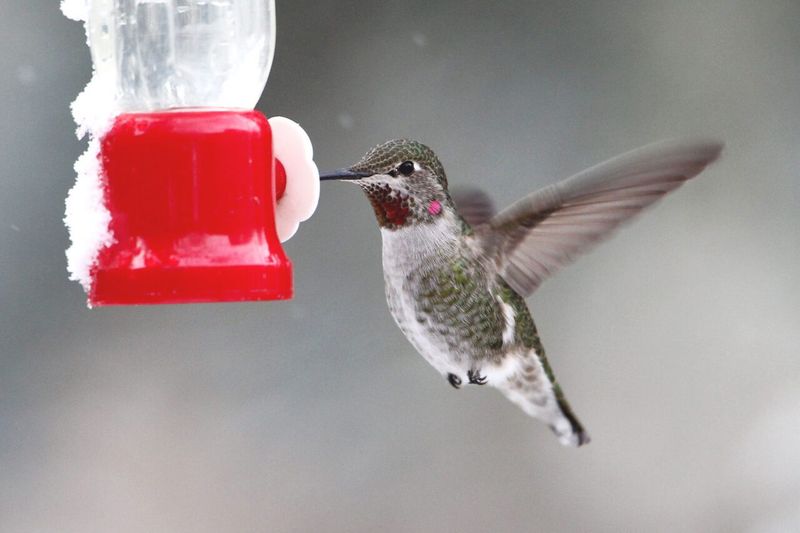
Weather can be a silent factor in deterring hummingbirds from visiting your yard. Harsh winds, rains, or extreme temperatures can make your garden less appealing. To mitigate this, design your garden with weather in mind. Ensure there are sheltered spots where hummingbirds can find refuge during adverse conditions.
Adjust feeder placement based on seasonal changes, moving them to more protected areas when necessary. By being mindful of these factors, you enhance your garden’s resilience and attractiveness. Thoughtful planting, such as adding windbreaks or rain shelters, can provide much-needed relief for hummingbirds.
In this way, your garden remains a constant haven, no matter the weather. Adaptability is key, ensuring that your efforts to attract hummingbirds are not thwarted by nature’s whims. This consideration creates a stable and welcoming environment, ensuring that hummingbirds see your garden as a reliable sanctuary.
11. Neglecting Garden Maintenance
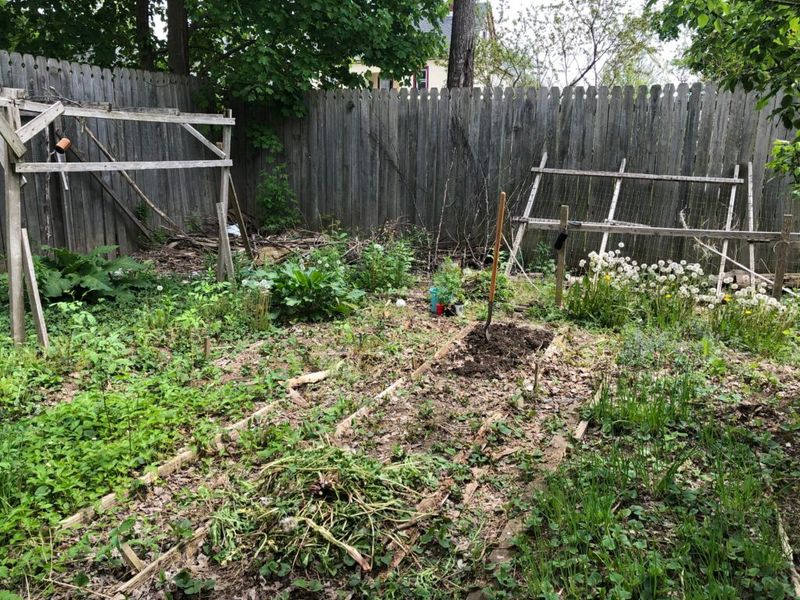
Garden maintenance plays a pivotal role in attracting hummingbirds. An overgrown or neglected garden can become uninviting, driving away these delicate birds. Regular upkeep, including pruning, weeding, and deadheading, ensures that your garden remains vibrant and healthy.
By maintaining a clean and organized outdoor space, you create an environment where hummingbirds feel comfortable. Overgrown areas can harbor predators or diseases that may harm the birds. Keeping your garden tidy and well-maintained not only attracts hummingbirds but also enhances your enjoyment of the space.
Your efforts in maintaining the garden are rewarded with lively visits from these aerial wonders. Regular maintenance is the backbone of a successful hummingbird-friendly garden, ensuring it remains a place of beauty and life. By taking care of your garden, you’re fostering a nurturing space that supports and attracts a diverse array of wildlife.
12. Overuse Of Artificial Lighting
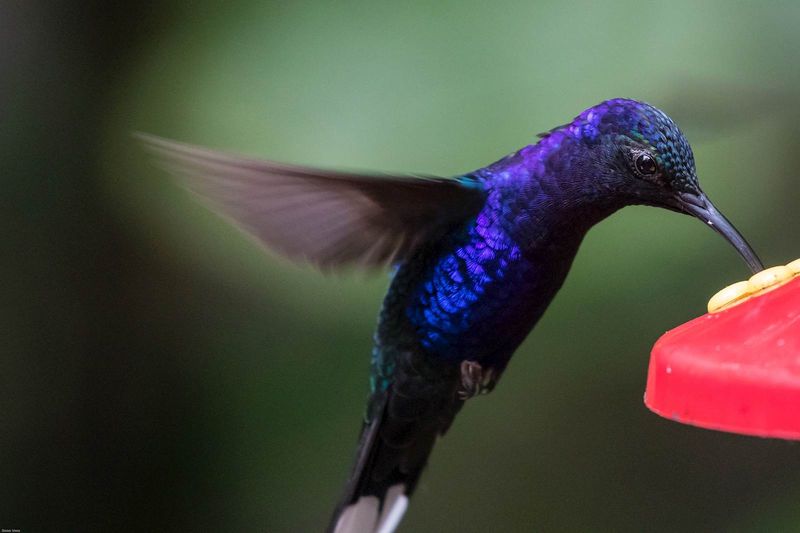
While lighting can create a beautiful ambiance, too much artificial light can deter hummingbirds. These birds are diurnal and rely on natural light cycles. Excessive lighting can disrupt their feeding and resting patterns, making your garden less appealing.
If you enjoy lighting your garden at night, consider using low-intensity lights and ensuring they are strategically placed. Avoid bright lights near feeders or nesting areas. By making these adjustments, you minimize disturbance and create a more inviting environment. This thoughtful approach allows hummingbirds to enjoy your garden during the day without being disturbed at night.
Balancing aesthetics with ecological considerations ensures your garden is a welcoming space for all creatures. By respecting the natural rhythms of hummingbirds, you enhance their well-being and increase the likelihood of their visits. A well-lit garden doesn’t have to be a deterrent if approached with care.
13. Ignoring Seasonal Changes
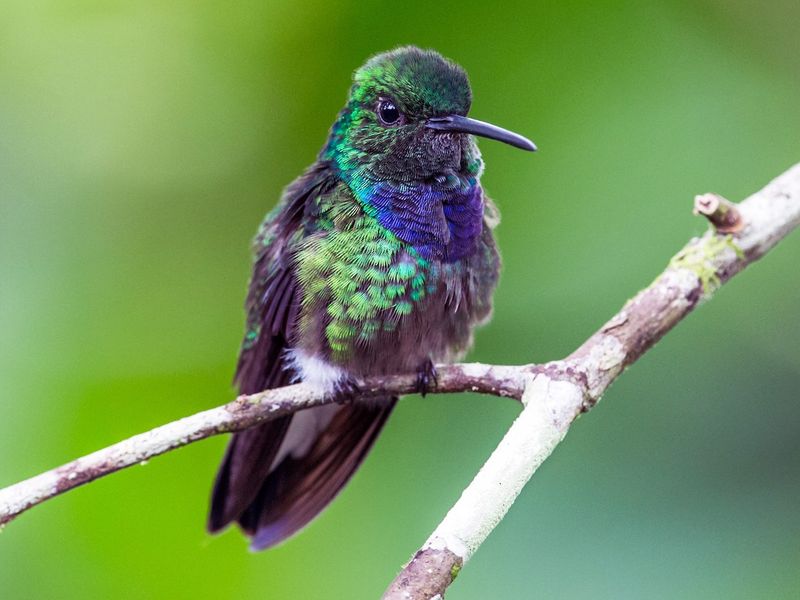
Seasonal changes are often overlooked in garden planning, yet they play a critical role in attracting hummingbirds year-round. As seasons shift, so do the needs and behaviors of these birds. Ensure your garden offers resources across all seasons, not just during peak times.
In colder months, consider leaving feeders out a bit longer or offering plants that bloom in late fall or early spring. This ensures hummingbirds have access to food even as temperatures drop. By acknowledging seasonal variations, you create a garden that supports hummingbirds throughout the year.
This approach not only benefits the birds but also enriches your garden’s diversity and resilience. Your garden becomes a dynamic ecosystem, adapting and thriving with the seasons. By planning for these changes, you ensure your garden remains a sanctuary for hummingbirds, encouraging their presence no matter the time of year.

